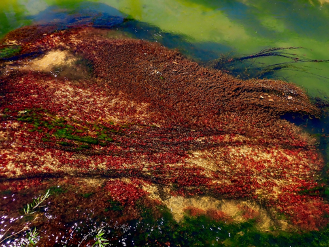Wio Wetlands is here!
- Yago Alonso Gimenez
- Mar 21, 2023
- 3 min read
Updated: Jul 6, 2023

For the planted aquarium, substrate is one of the fundamental components; it provides a planting medium, a nutrient base and contributes to the aesthetic style and ambience of the display. Understanding how plants utilise substrates in the wild can help us to provide the best conditions for them in our aquaria. Many popular and versatile aquarium plant species are heavy root-feeders, with the Echinodorus and Cryptocoryne families being classic example of this. If you have ever tried pulling up a mature, well-established Echinodorus plant you are sure to have encountered, even battled against, its extensive root system! However, even many of the stem plants which also take nutrients from the water column are unlikely to do well if they are not given plenty of nutrients and a secure anchor at their base.
Our experiments over time have shown us that the volume and depth of soil substrate needed to provide long-term success for traditional stem plants such as Rotala. Other species such as the Nymphaea and Aponogeton families may initially rely on the nutrients stored in their bulbs but will eventually grow and require additional nutrients from the surrounding substrate. Carpeting plants are unlikely to thrive in poor quality soil substrate, or where only a shallow layer of substrate has been added.
For those of us who have encountered carpeting aquatic plants in the wild, this might seem initially surprising. Eleocharis species and plants such as Helanthium can be found growing in soft sand and in grainy, gravel-like substrate which appears to contain little organic material and therefore few nutrients.
The same is true for many stem plants. In Brazil it is possible to find the stunning Ludwigia inclinata, growing in shallow sand, in shade and in strong currents. In the aquarium, this species requires an extremely nutrient-rich substrate, high levels of lighting and usually looks best in gentle flow.
So how is it that plants which seem to do well in nature in apparently adverse conditions, will fail to flourish in our aquaria if provided with the same dynamics? The answer, simply, is scale and volume. When we observe those Eleocharis and Helanthium growing in a sandy substrate, which appears nutrient poor, we are in fact seeing only a snapshot in time of the plants’ existence.
As the water flows past, hundreds if not thousands of litres every second, tiny organic particles are flushed into the substrate along with suspended nutrients, moving through the porous sand and reaching the roots of the plants. This is the same for the delicate stem plants such as Ludwigia inclinata, which can make use of both nutrients passing in the water column and those which are deposited within the substrate. Just because the sand in which the plants grow is pale, rather than dark with organic material and nutrients, doesn’t mean that it is inert or barren.

Meanwhile, within wild substrates, tiny creatures and micro-organisms are constantly moving around, shifting grains and layers as they forage. Like worms in terrestrial soil, this raises nutrients from lower layers, helps to ‘dig-in’ new nutrients in the upper layers and prevents the build-up of bacteria or gases. This is true or lakes and ponds, where the lack of a current to bring nutrients is offset by the activity of micro-organisms, fish, and even the disturbance to the substrate caused by aquatic birds, either as they forage for animals in the mud, or as they stalk through, searching for prey such as frogs.

In rivers and streams, the sheer volume of passing water and the accompanying levels of nutrients provide plants with everything they need to feed. In lakes and ponds, the volume of organic matter, from surrounding vegetation and fallen insects and detritus is high, and as this decomposes, aided by billions of micro-organisms, it provides food for aquatic plants. In both lentic and lotic habitats, the sun, especially in tropical regions, is of an intensity and duration that we cannot mimic in our aquaria and the large surface areas mean there is a high gas exchange, ensuring that plenty of Co2 is available for plants growing under water. So, the high volumes of light, nutrients and co2 are caused by the scale of the environmental factors; plenty of available organic material and thus nutrients, a wide sky above and extensive surface areas for gas exchange.

Trying to imitate all this within the confines of even the largest aquaria is a challenge. In our planted displays, we attempt to maintain a ‘snapshot’ of optimal growing conditions all day, from when our Co2 and lights come on and with the constant flow of our filters, to the daily and weekly maintenance and nutrient additions we carry out. The element that is perhaps most invisible to us however, and yet, which is so crucial, is what is going on within our substrate. Are our plants sitting in a nutrient-poor base, or are they getting constant, long-term support to grow and thrive?
To be continued...






Comments